Automatic transmission - six-speed, electronically controlled.
Sixth gear is overdrive.
Starting off
1. After the engine has warmed up, while continuing to press the brake pedal, move the gear selector lever to position R or D.
Caution: Do not switch between positions D (forward stroke) and R (reverse) or P (parking) while the car is moving. This will damage the transmission and may cause injury.
2. Release the parking brake and brake pedal.
3. To move off, slowly press the accelerator pedal.
Transfer indication
Type 1
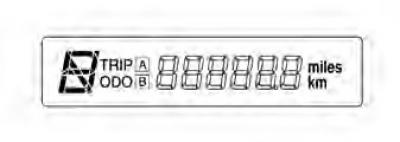
Located in the instrument cluster.
Shows the selected gear or transmission mode.
Type 2
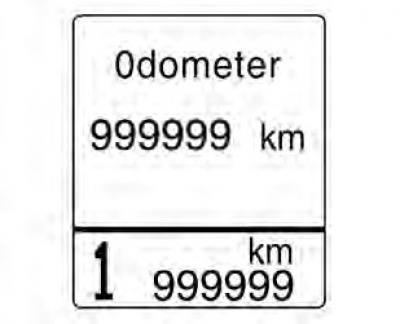
If your vehicle has a DIC display in the middle of the instrument cluster, the selected gear or transmission mode is displayed at the bottom of the DIC display.
Gear selector
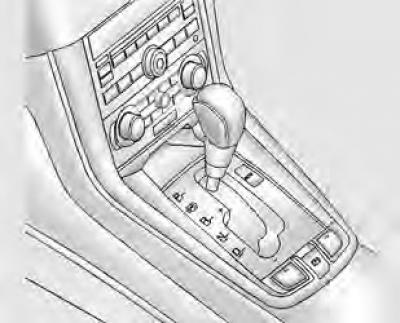
- P (PARKING): Front wheel lock. Shift to position P only when the vehicle is stationary and the parking brake applied.
- R (REVERSE): Reverse gear position. Switch to position R only when the vehicle is stationary.
- N (NEUTRAL): Transmission neutral position.
- D: This range is for all normal driving modes. Allows you to switch to all 6 forward gears.
Attention: Do not press the accelerator pedal while you are shifting the gear selector.
Never press the accelerator and brake pedals at the same time.
When the gear is engaged, after releasing the brake pedal, the car starts to move slowly.
Do not use the P position (parking) instead of a parking brake.
Stop the engine, apply the parking brake, and remove the ignition key when exiting the vehicle.
Never leave a car with a running engine unattended.
Gear shifting
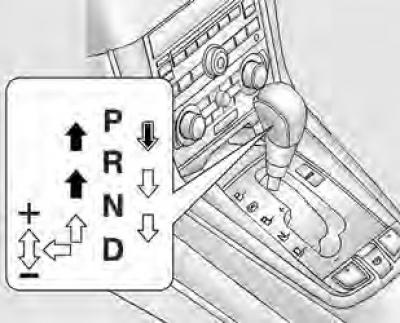
The shifting between gears is described below.

To shift, depress the brake pedal and press the release button.
Black arrows indicate the ranges to switch to which you need to press the lock release button.

To switch, press the unlock button.
The white arrows indicate the ranges, to switch to which you do not need to press the lock release button.

Free switching.
Regardless of whether the vehicle is moving or stationary, you can switch to manual mode by moving the gear lever from the position "D" to the left into the manual mode slot. To return to work mode "D", move the shift lever back to the right into the main slot.
In manual mode, moving the shift lever forward or backward allows you to quickly shift to the next gear. Unlike a manual transmission, manual mode allows you to shift gears while pressing the accelerator pedal.
UP (+): Move this lever forward once to shift to the next higher gear.
DOWN (-): Move this lever back once to shift to the next lower gear.
Note: In manual mode, you can only shift between the five forward gears.
To reverse or stop the vehicle, move the gear lever to the appropriate position: "R" or "P".
Note: In manual mode, downshifting is performed automatically when the vehicle slows down.
When the car stops, the first gear is automatically set.
To maintain the safety and performance of the vehicle at the desired level, the system may not perform some shifts when the shift lever is moved.
Before moving off places on slippery roads, move the gear lever to position + (up). This results in second gear, which is more suitable for smooth acceleration on slippery roads. Move the lever to position - (down), to return to first gear.
Attention: In manual mode, the driver must upshift according to the prevailing road conditions, trying to keep the engine speed below the red zone.
Since heavy engine braking and/or hard acceleration can cause slippage, downshifting should be done carefully according to the speed of the vehicle.
Engine braking
On long descents, engine braking can be used. To do this, successively switch in manual mode to lower gears.
Warning: Do not downshift the gearbox by two or more steps at once.
This will prevent damage to the transmission or loss of control and possible injury.
Note: Using the engine braking effect on long descents will extend the life of the brakes.
Car rocking
Vehicle rocking is only permitted when skidding in sand, mud or snow.
Alternately move the gear selector to positions D and R.
Do not accelerate the engine and avoid sudden accelerations.
Parking
After stopping the vehicle by depressing the brake pedal, set the switch to position P and apply the parking brake by lifting the lever all the way up and remove the ignition key.
"Kick Down"
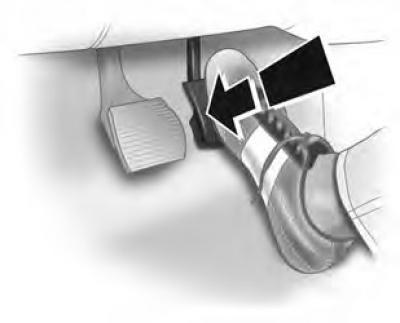
For faster acceleration, press the accelerator pedal all the way down and hold it there. The transmission will shift to a lower gear depending on the engine speed.
Malfunction
In the event of a fault, the fault indicator lights up. The gearbox is blocked in a certain gear and no longer allows shifting in either automatic or manual mode.
Contact a service station immediately to have the problem rectified.
Power failure
In the event of a power failure, the gear selector lever cannot be moved out of the P position.
When the battery is discharged, start the engine using the jump leads.
If the battery is not the cause of the problem, unlock the gear selector and remove the key from the ignition.
Unlocking the gear selector lever
Before moving the gear selector out of position "P" (parking) turn on the ignition and depress the brake pedal as far as it will go. If it is impossible to move the gear selector from the position "P" with the ignition on and the brake pedal depressed, do the following:
1. Turn off the ignition and remove the key.
2. Depress and hold the brake pedal and apply the parking brake.
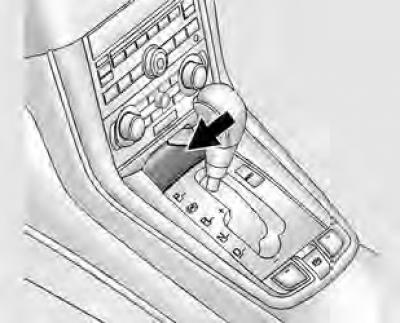
3. Remove the rubber mat.

4. Insert the ignition key into the lock and press it.
5. Place the shift lever in neutral position "N".
6. Remove the ignition key from the slot.
7. Put the rubber mat back in place.
8. Repair the vehicle as soon as possible.
Warning: To avoid damage to the transmission, observe the following:
Do not depress the accelerator pedal when shifting from P or N to R or into forward gear.
This can lead not only to damage to the transmission, but also to loss of vehicle control.
Try to use position D whenever possible. Do not switch from position P to position R while the vehicle is moving.
When stopping on an incline, do not hold the vehicle in place by depressing the accelerator pedal. Use the service brake.
When shifting from P or N to R or into forward gear, depress the brake pedal.
Otherwise, the transmission may be damaged or the vehicle may start suddenly, causing the driver to lose control of the vehicle, resulting in injury, injury to the vehicle, or other property.
Low Fuel Mode
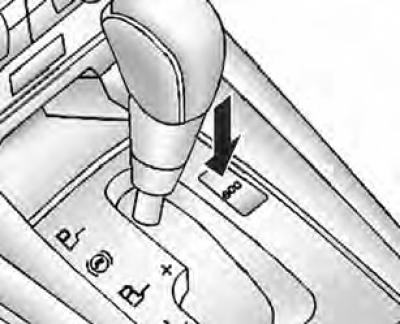
Your vehicle may have a low fuel consumption mode. When it is turned on, fuel consumption can be noticeably reduced.
Low fuel consumption mode is activated by pressing the Eco button next to the gear lever. When this mode is activated, the corresponding indicator lights up in the instrument cluster. See Fuel economy indicator. Pressing the button again will turn off the low fuel consumption mode.
If Low Fuel Mode is enabled:
- In this case, switching to higher gears will occur faster, and to lower gears with a delay.
- The torque converter will lock up earlier and unlock later.
- The accelerator pedal will be less sensitive.
- When decelerating, the car's electronics will cut off the fuel supply to the engine cylinders earlier. Do not use low fuel mode when towing.
